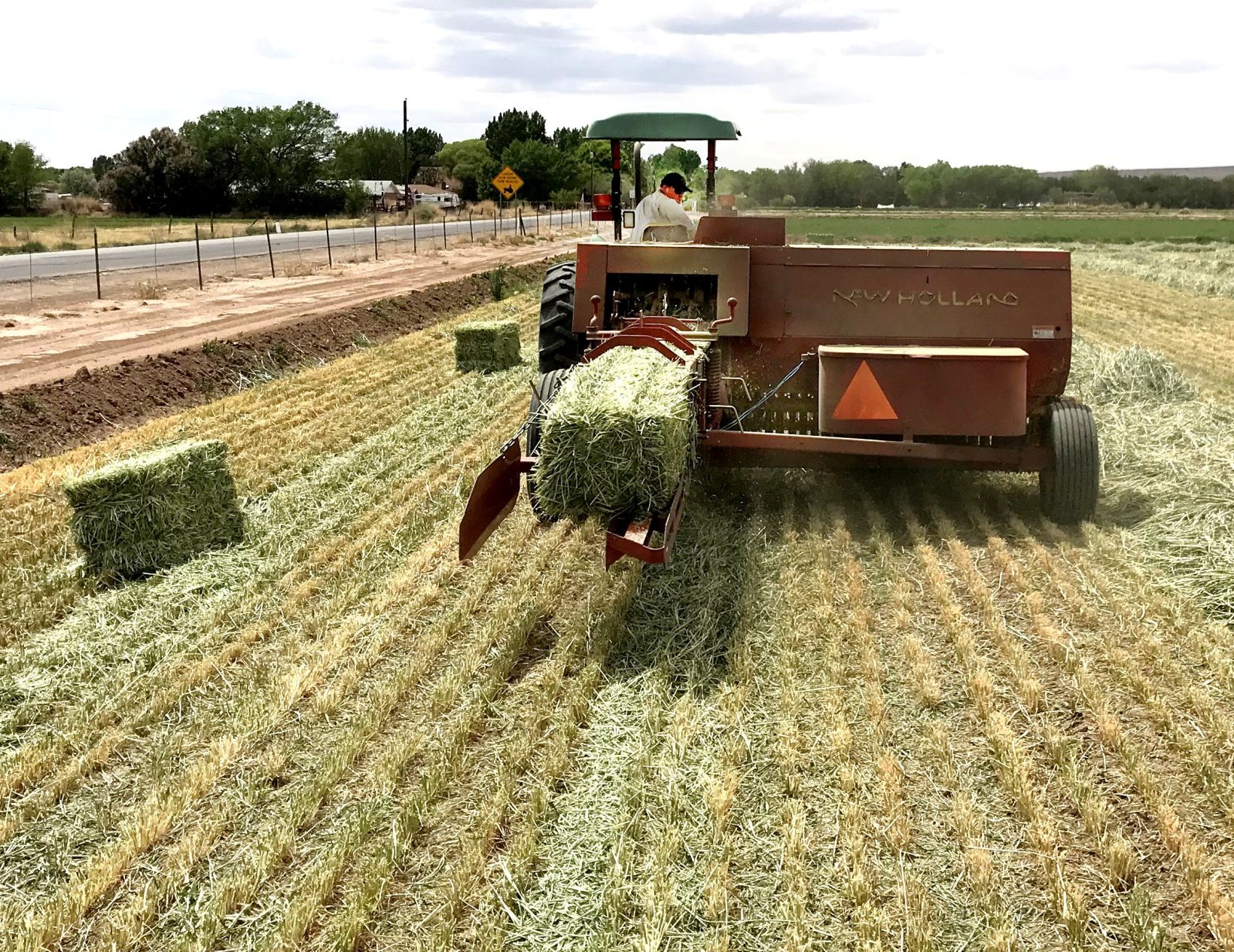State-By-State Hay Summary

Colorado—In the Aug. 29 report, trade activity moderate on light demand. Stable hay sold steady. According to the NASS Colorado Crop Progress Report for the week ending Aug. 25, alfalfa second cutting harvested is 83%, third cutting 33%. Stored feed supplies were reported as 1% very short, 13% short, 72% adequate, and 14% surplus.
Missouri—In the Aug. 29 report, there is a bit of hay moving around the state but for the most part hay movement is very slow. Hay prices are steady to weak. The supply of hay is moderate to heavy, and demand is light. Heat has taken control the last couple of weeks and for many overshadowed any rains received. The latest drought monitor now has nearly 52 percent of the state in either abnormally or moderately dry status.
Nebraska—In the Aug. 29 report, compared to last report, alfalfa hay prices steady. Dehydrated and sun-cured alfalfa pellets in the Platte Valley and east regions steady. Ground and delivered alfalfa and corn stalks in the Platte Valley and west regions unchanged. Overall, demand for hay was very light.
Oklahoma—In the Aug. 30 report, compared to the last report, hay trade is at a standstill. Oklahoma still has a lot of 2023 hay, which is being sold and still stacked in barns. Next report will be released Sept. 13.
Texas—In the Aug. 23 report, compared to last report, hay prices are mostly steady across all regions. Hay trade is still pretty limited on moderate demand. Hot and dry conditions dominated the weather pattern over the past two weeks. The USDA reported 46% of the pasture and rangeland in Texas was in poor to very poor condition. As hot and dry conditions persist, producers in the southern region learned that irrigation water will be shut off to the valley. This will likely result in hay producers being limited to only three cuttings this year, instead of the four to five cuttings put up in a normal year. However, tonnage of hay being put up seems to be higher per cutting but quality has suffered with the majority of the hay being marketed in the south as utility to fair. According to the Texas Crop and Weather Report, producers in the north and east are battling Bermuda stem maggots and armyworm infestations in there crops. Next report will be released Sept. 6.
South Dakota—In the Aug. 29 report, compared to last report, demand and movement has been slower than normal, producers are saying it has been quiet.
New Mexico—In the Aug. 30 report, compared to last report, hay is steady demand is light with not much movement. According to NASS, New Mexico Crop Progress report for the week ending Aug. 25, the third cutting of alfalfa hay is 70% complete, fourth cutting 45% and fifth cutting is 15% complete .Hay and roughage supplies were reported as 21% very short, 43% short, 35% adequate, and 1% surplus, compared with 25% very short, 38% short, 34% adequate, and 3% surplus last week.
Wyoming—In the Aug. 29 report, compared to the last report, alfalfa and alfalfa/grass mix hay sold steady. Demand was moderate. Some producers are donating hay to those affected by the wildfires.
Montana—In the Aug. 23 report, compared to last report, hay sold mostly $10 to $15 lower. New crop hay continues to see slow movement as most producers are seeing light interest and demand. Producers needing to move hay have lowered asking prices in hopes of finding new interest. Rancher to rancher sales are continuing to make an impact on the market as many ranchers are opting to sell new crop hay while feeding old crop hay this winter. Demand for hay is mostly light as heavy supplies continue to be seen. Dairy quality hay is being offered at little to no premium to feeding quality hay. Many ranchers are opting to not cut a third cutting and use fields for grazing this winter. The vast majority of old crop hay has been cleaned up, however some will continue to deliver into the fall. Much of the central portions of the state are finishing up second cutting, while the southern and eastern portions of the state are starting on third. Next report will be released Sept. 6.



